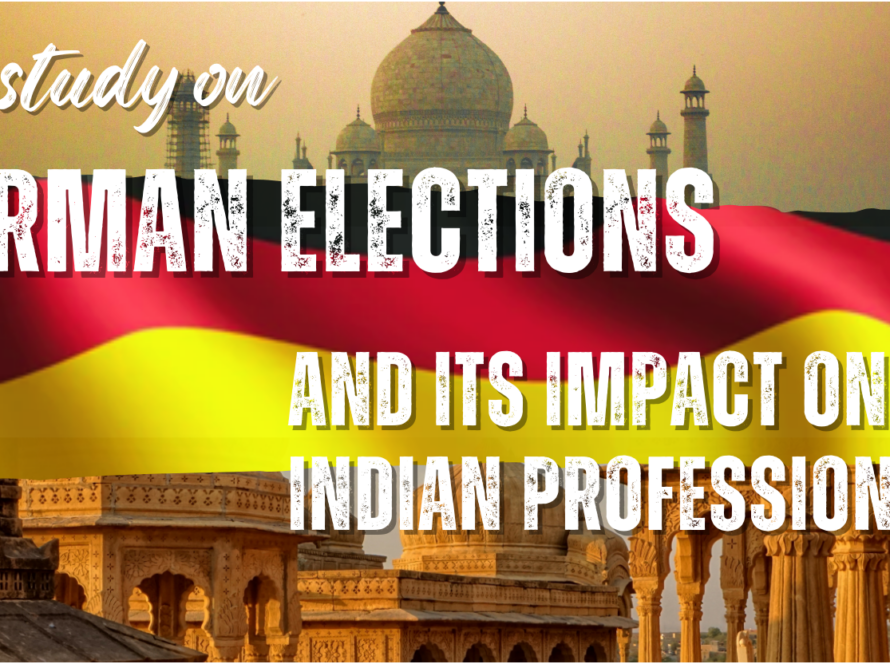Introduction
Indian migration to Germany has evolved over more than a century from early intellectual and political exchanges to a modern phenomenon driven by education, skilled labor needs, and strategic economic policies. This study examines the timeline of Indian immigration, highlighting major waves—from the early 20th century when Indian nationalists and students first arrived, through the post‑World War II period and the recruitment of nurses, to today’s influx of high‑skilled professionals and students. It also explores the socio‑economic and strategic factors on the German side that have encouraged this migration. In doing so, it draws on academic reports, policy documents, and contemporary news sources.
Timeline of Indian Immigration to Germany
Early 20th Century: Intellectual Exchange and Political Engagement
- Pre‑World War I and Interwar Period
Although extended Indian settlement in Germany was minimal before the 20th century, early interactions set a scholarly foundation. Renowned German intellectuals such as Hegel and Schopenhauer showed fascination with Indian culture.
In the early 1900s, a small number of Indian students and freedom fighters travelled to Germany. Indian nationalists—seeking support against British colonial rule—visited Germany, and figures like Subhas Chandra Bose later engaged with German political circles during World War II.
1920s–1930s: The Era of Students and Political Radicals
- 1920s: Educational and Political Pioneers
The 1920s saw an increase in Indian students coming to Germany to pursue higher education. Institutions in Germany had an international reputation, and scholarships helped many Indian technical and engineering students secure admission. - 1930s: Political Mobilization and the Nazi Era
During the 1930s, political activism became more pronounced. Indian nationalists, including early supporters of Subhas Chandra Bose, were active in Berlin. Although the turbulent politics of Nazi Germany complicated matters, some Indian freedom fighters found a temporary base for organizing against colonial rule.
World War II: The Indian Legion and Political Alliances
- 1940s: Formation of the Indian Legion
During World War II, Germany recruited Indian prisoners of war and expatriates into formations like the Indian Legion (also known as the Legion Freies Indien) under Subhas Chandra Bose’s influence.
Post‑World War II: Reconstruction and Early Professional Migration
- 1950s: Educational Migration and Skilled Entry
After the war, the improved diplomatic relations between India and the newly established Federal Republic of Germany led to a new wave of Indian students and professionals. Many came on scholarships to study engineering and technology, forming the nucleus of an emerging Indian diaspora.
Late 1960s–1970s: Recruitment of Indian Nurses and Chain Migration
- Late 1960s: The “Angels from India”
In the late 1960s, responding to labor shortages in the healthcare sector, German Catholic institutions recruited several thousand nurses from Kerala. These nurses, predominantly Catholic women, came as guest workers and many eventually settled in Germany, often marrying into the local population. - 1970s: Continued Professional and Family Migration
Alongside the recruitment of nurses, chain migration began. Early migrants paved the way for their relatives to join them, leading to a gradual expansion of the Indian community. A small number of Punjabi Sikhs also sought asylum in this period, adding to the community’s diversity.
1980s–1990s: Diversification and Policy Changes
- 1980s–1990s: Expansion Beyond Healthcare
The subsequent decades saw Indian immigration diversify beyond the nursing and student segments. Increasing numbers of professionals—including engineers, IT specialists, and academics—arrived. Family reunification policies enabled earlier migrants to bring their families, contributing to the slow but steady growth of a well‑integrated Indian community in Germany.
2000 Onward: High‑Skilled Migration and the Modern Diaspora
- 2000s: The Green Card Initiative and New Inflows
A turning point came with the German government’s introduction of the Green Card program, which simplified the immigration process for high‑skilled workers. This policy attracted a new wave of Indian professionals—especially in IT, engineering, and research—who found Germany’s labor market and career opportunities attractive. - 2010s–2020s: Record Numbers of Students and Skilled Professionals
In recent years, the number of Indian students in Germany has grown significantly, with enrollment figures in technical and STEM fields quadrupling over a decade. This period has also seen ongoing efforts to streamline visa and work permit procedures, making Germany a preferred destination for skilled migration.
Socio‑Economic Factors Facilitating Indian Immigration
Several key socio‑economic factors on the German side have contributed to making the country an attractive destination for Indian migrants:
1. Demand for Skilled Labor and Demographic Challenges
- Aging Population and Labor Shortages:
Germany faces demographic challenges due to an aging native population and a shrinking workforce. This has led to policies aimed at attracting skilled migrants to fill gaps in sectors such as IT, engineering, healthcare, and research. - Economic Competitiveness:
With high levels of technological innovation and a robust industrial base, Germany offers excellent career prospects and competitive wages. Indian professionals, especially those in STEM fields, are drawn by these opportunities.
2. Educational Opportunities and Integration Policies
- World‑Class Education:
German universities have a strong reputation in engineering and technology. Many Indian students are attracted by the low or no tuition fees and the high quality of education, especially in STEM disciplines. - Language and Integration Support:
While language barriers initially posed challenges, many programs and language courses are now available to help international students integrate. Moreover, improved recognition of foreign qualifications has eased the transition for high‑skilled migrants. - Family Reunification:
Progressive family reunification policies have allowed the early migrants to bring their families, fostering long‑term community development and integration.
3. Strategic Economic and Political Policies
- Pro‑Migration Policies:
Germany’s introduction of the Green Card initiative and later modifications such as the EU Blue Card have streamlined the immigration process for high‑skilled workers. These policies reduce bureaucratic hurdles and attract talent from countries like India. - International Partnerships and Mobility Agreements:
Strategic bilateral agreements, such as the Indo‑German Migration and Mobility Partnership, facilitate smoother movement for students and professionals. These agreements underscore Germany’s recognition of India as an important partner. - Globalization and Strategic Positioning:
As Germany looks to secure its role in the global economy, attracting skilled immigrants is seen as part of a broader strategy to enhance competitiveness. Additionally, India’s growing economic power makes it a strategic partner in international relations, further encouraging policies that favor migration from India.
Strategic Factors: Germany’s Broader Geopolitical and Economic Context
Beyond the immediate labor market and educational benefits, several broader strategic factors have also played a role:
1. Demographic Imperatives and Economic Sustainability
- Mitigating an Aging Workforce:
To counterbalance an aging native population, Germany actively seeks immigrants who can help maintain economic growth and support its social security systems. - Enhancing Global Competitiveness:
By attracting talented Indian professionals, Germany reinforces its position as a global economic leader. The influx of innovative ideas and technical expertise contributes to industrial and technological advancement.
2. Bilateral and Multilateral Relations
- Strengthening Indo‑German Ties:
Political, cultural, and economic partnerships between India and Germany have deepened over the years. These bilateral ties not only facilitate migration but also lead to joint research, trade, and investment initiatives. - Geopolitical Strategy:
In a multipolar world, Germany’s engagement with India helps diversify its strategic partnerships. Closer ties with India are also seen as a counterbalance in broader international relations, particularly in light of changing dynamics with other global powers.
3. Policy Innovation and Integration Measures
- Modern Visa and Work Permit Systems:
Recent improvements in visa processing and work permit systems have made it easier for Indians to migrate for education and employment. The reduction in waiting times and simplified application processes are significant incentives. - Support for Research and Innovation:
German policies encourage collaboration between academia, research institutions, and industry. This is particularly attractive for Indian students and researchers who seek cutting‑edge environments and opportunities to innovate.
Conclusion
The history of Indian immigration to Germany is a multifaceted story that reflects broader historical, socio‑economic, and strategic transformations. From the early 20th century when Indian intellectuals and freedom fighters engaged with German academia and politics, to the post‑World War II influx of students and professionals, and finally to today’s dynamic high‑skilled migration fuelled by proactive German policies, the evolution has been remarkable.
Key socio‑economic factors such as the demand for skilled labor, excellent educational opportunities, and effective integration measures have combined with strategic economic and geopolitical imperatives to make Germany an attractive destination for Indian migrants. Bilateral agreements, modern visa regimes, and targeted recruitment policies have further streamlined the migration process.
As the Indian community in Germany continues to grow—encompassing students, professionals, and families—the bilateral relationship is expected to deepen. Future policies will likely continue to build on these trends, ensuring that migration remains an engine for economic growth and cultural exchange on both sides.
References and Further Reading
- Germany–India Relations and Migration Dynamics
Germany–India Relations (Wikipedia) - Indian Diaspora in Germany – ICMPD Report
INDIAN DIASPORA IN GERMANY – ICMPD - Indian High‑Skilled Migrants and International Students in Germany
Bertelsmann Stiftung Report (PDF) - A History of Indian Migration to Germany – Urmila Goel
A History of Indian Migration to Germany - Immigration from India: A Great Success for Germany – IW Report
IW Report by Wido Geis-Thöne - CARIM-India Report – EUI
CARIM-India Report - Indians in Germany – Wikipedia
Indians in Germany - Recent Developments in Indo‑German Strategic Ties (AP News)
Indians in Germany: Modi-Scholz Talks - Indian High‑Skilled Migrants and International Students in Germany (SSOAR)
SSOAR Paper on Indian High‑Skilled Migrants - Indian Legion during WWII
Indian Legion (Wikipedia) - ChatGPT for research assistance
- Image credit: https://www.studyabroadexpert.com/ , http://www.urmila.de/ and Wikipedia
This study offers an in‑depth yet concise overview of how historical events, labor market dynamics, educational opportunities, and strategic policies in Germany have collectively shaped the course of Indian immigration over the last century.




1 Comment
Alastair87
Very good https://is.gd/tpjNyL